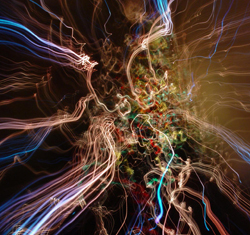On rare days off from running sound, I get the opportunity to go to several local clubs to check out the work of other mix engineers.
This is really cool because I pick up tips that can help my own work, in addition to experiencing a wide range of gear.
One thing in particular that I pay close attention to is effects, and I find that in most every case, some type of effect is applied on almost every instrument and vocal.
Which leads me to the point that particularly in club sound, the proper use of effects can leave the audience with the impression that they’ve heard a full-blown concert.
Reverb, simply defined, is the result of many decaying reflections of sound in a room.
Reverb units simulate reflections of different types of rooms, and most units are outfitted with standard pre-sets for long or short reverb times, reverse gates, gated reverb, delays, flange, chorus and so on. These settings can usually be adjusted and saved for specific
More specifically, some adjustable settings include:
Reverb type. Common choices include room, hall, plate, and vocal.
Reverb delay. The time between the initial signal, such as a vocal, and the start of the actual reverb effect.
Reverb time. How long the reverb can be heard after the input signal stops.
Gate time. The amount of time before the response is cut off. A gated reverb, typically applied for drums, cuts off the sound of the reverb more abruptly than the usual more gradual decay.
Reverse gate. Usually a gated reverb, but with a twist. Instead of simulating reflections that become quieter after the initial signal, a reverse gate simulates reflections where the sound gets louder over time, and then abruptly cuts off. Again, usually applied to drums.
In contrast to reverb, delay is simply a number of very distinct added repetitions to sound. These repetitions will usually be the same (or very close to the same) volume of the original signal, although many delay units now allow setting both volume and the decay of the repeating signal.
On most units, the timing of these repetitions can be set from milliseconds to several seconds. The user can also define “feedback” – the number of times it will repeat.
Delay can be used on almost any instrument, but most commonly on vocals. A short delay time used on a vocal can “fatten it up” nicely, whereas a long delay can create an echo effect.
Both delay and reverb run in stereo can also be used to create even bigger sounds and/or “ping-pong” effects. Some units also provide the ability to set different reverb or delay times for each side of a stereo system.
I always recommend running any effects in stereo in order to gain the biggest advantage from them.
Running effects in stereo versus mono is like comparing night versus day – the difference is quite substantial.















